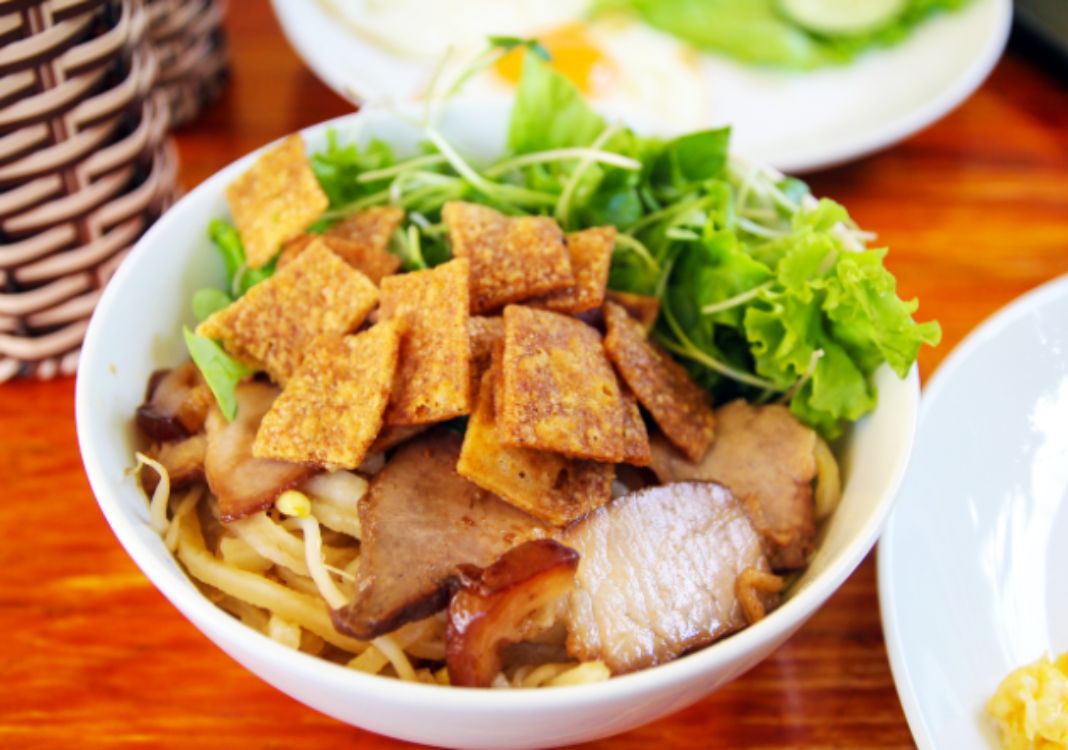Cao Lau noodle soup, a specialty of Hoi An ancient town in Quang Nam Province, has been listed among the most attractive rice noodles in Asia by CNN. The dish highlights tasty broth, flat pieces of fried pork, attracting both locals and foreigners who taste it.
Most people are curious about the name of the dish. An explanation says Cao lau is actually the local pronunciation of “delicious dish” in Chinese. Another says a long time ago, traders coming to Hoi An wanted to enjoyed noodles served on the top floor of eateries to easily look after their goods. This is the reason why the dish is called “cao lầu,” which means high buildings in Vietnamese.
Like Quang-style noodle soup, cao lau is a specialty of the central region in general and Hoi An in particular. However, some may not tell the difference between the two dishes. In fact, ingredients and the preparation of cao lau and Quang-style noodle soup both have their own features.
The noodles used for cao lau are shorter than those for Quang noodle soup. The rice for cao lau noodles has to be soaked in water mixed with cajuput firewood ash. The step helps the noodles have a light yellow color. In addition, rice after being ground has to be mixed with water from the well-known Ba Le well in Hoi An which is believed to create the special taste of the noodles.
Another difference is the crispy rice paper served with cao lau is brown while that for Quang-style noodle is rice paper with black sesame. At some local eateries, cooks use roasted pork skin instead of rice paper.
The balance of flavor is what makes cao lau special—including noodles, slices of grilled pork, crispy rice paper, herbs collected from Tra Que vegetale village and Hoi An-style chili paste.
If you don’t have time to travel to Hoi An to enjoy this specialty, visit some eateries serving the dish in Saigon like Hoi pho Cao Lau, Vi Quang Cao Lau, Boong Cao Lau, etc. The dishes served there may be as good as the original.

By Lam Nhu









